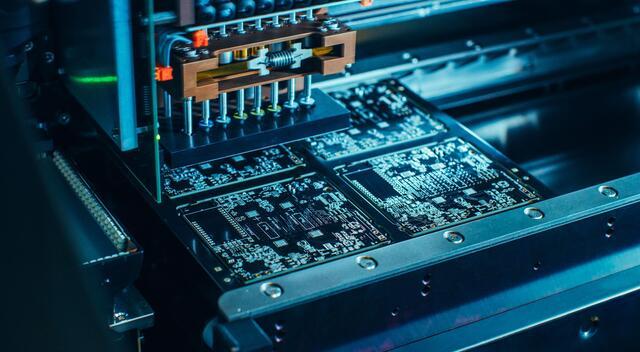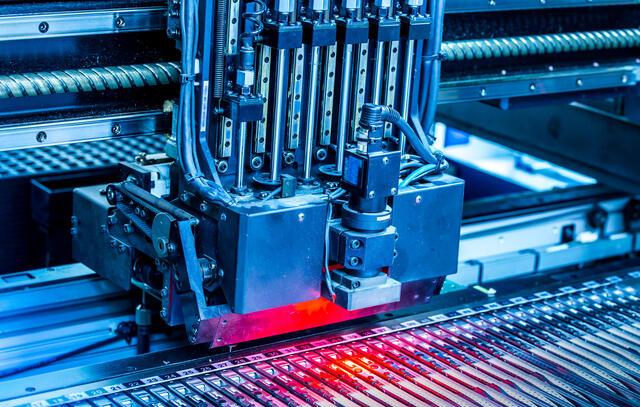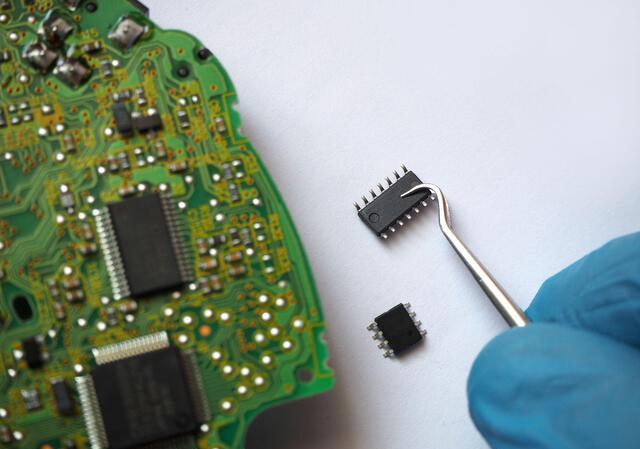Content Menu
● Understanding Vacuum Pickup Tools
>> Components of a Vacuum Pickup Tool
>> Types of Vacuum Pickup Tools
● How Does a Vacuum Pickup Tool Work?
>> Creating Suction
● Applications in SMT
● Advantages Over Traditional Methods
● Choosing the Right Vacuum Pickup Tool
● Maintenance Tips for Vacuum Pickup Tools
● The Role of Vacuum Pickup Tools in Automation
>> Benefits of Automation with Vacuum Pickup Tools
● Innovations in Vacuum Pickup Technology
● Common Challenges When Using Vacuum Pickup Tools
● Conclusion
● FAQ
>> 1. What types of components can I use with a vacuum pickup tool?
>> 2. How do I maintain my vacuum pickup tool?
>> 3. Can I use a vacuum pickup tool for larger components?
>> 4. Are there any safety concerns when using vacuum pickup tools?
>> 5. How do I choose the right nozzle size for my vacuum pickup tool?
In the world of electronics manufacturing, particularly in Surface Mount Technology (SMT), precision and efficiency are paramount. One of the essential tools that enhance these aspects is the vacuum pickup tool. This article will explore what a vacuum pickup tool is, its working mechanism, its applications in SMT, and its advantages over traditional methods.

Understanding Vacuum Pickup Tools
A vacuum pickup tool, often referred to as a vacuum tweezer or vacuum pen, is a device designed to pick up and manipulate small components during the assembly process. These tools are particularly useful for handling surface mount devices (SMDs), which are typically small and can be challenging to grasp with standard tools like tweezers.
Components of a Vacuum Pickup Tool
The basic structure of a vacuum pickup tool includes:
- Nozzle: The end part where suction occurs. Nozzles come in various sizes to accommodate different component sizes.
- Vacuum Pump: This component creates the suction necessary to lift components. It can be manual or powered.
- Control Mechanism: This allows the user to activate or deactivate the suction, often through a button or switch.
Types of Vacuum Pickup Tools
There are several types of vacuum pickup tools available, including:
- Manual Vacuum Pickup Tools: These require physical action from the user to create suction.
- Battery-Operated Tools: These tools use batteries to power an internal pump for continuous suction.
- Pneumatic Tools: These require an external air source and are typically used in industrial settings.
How Does a Vacuum Pickup Tool Work?
The operation of a vacuum pickup tool is relatively straightforward but relies on fundamental principles of physics.
Creating Suction
1. Activation: When the user activates the tool (by pressing a button or switch), the vacuum pump begins to operate.
2. Air Removal: The pump removes air from the nozzle, creating a low-pressure area that generates suction.
3. Component Attachment: When the nozzle is placed against an SMD component, the difference in pressure causes the component to adhere to the nozzle due to atmospheric pressure pushing it against the tip.
4. Placement: To release the component, the user deactivates the suction, allowing air back into the nozzle. This can be done by pressing another button or simply lifting the nozzle away from the component.
Applications in SMT
Vacuum pickup tools are indispensable in various stages of SMT assembly:
- Component Placement: They allow for precise placement of SMDs onto printed circuit boards (PCBs).
- Rework and Repair: In cases where components need to be replaced or repositioned, these tools facilitate careful removal without damaging surrounding components.
- Handling Small Parts: Beyond electronics, vacuum pickup tools are also useful in jewelry making and other crafts where small parts need manipulation.
Advantages Over Traditional Methods
Using a vacuum pickup tool offers several benefits compared to conventional methods like tweezers:
- Increased Precision: The ability to control suction allows for more accurate placement of components.
- Reduced Damage Risk: The gentle handling reduces the risk of damaging delicate SMDs compared to using tweezers.
- Improved Efficiency: The speed at which components can be picked and placed significantly enhances productivity in manufacturing environments.

Choosing the Right Vacuum Pickup Tool
When selecting a vacuum pickup tool for SMT applications, consider the following factors:
- Suction Power: Ensure that the tool can handle the weight and size of your components effectively.
- Nozzle Size Options: A variety of nozzle sizes allows for flexibility when working with different components.
- Ease of Use: Look for tools that have intuitive controls for activating and deactivating suction.
- Durability: Choose tools made from high-quality materials that can withstand frequent use.
Maintenance Tips for Vacuum Pickup Tools
To ensure longevity and optimal performance of your vacuum pickup tool:
- Regular Cleaning: Keep nozzles clean from dust and debris that could affect suction.
- Check Seals and Tubing: Inspect for any wear or damage that could lead to loss of suction power.
- Battery Maintenance: For battery-operated models, replace batteries as needed and store them properly when not in use.
The Role of Vacuum Pickup Tools in Automation
As industries move towards automation, vacuum pickup tools have adapted to integrate with robotic systems. Automated SMT lines often incorporate robotic arms equipped with advanced vacuum pickup tools. This integration enhances production efficiency by allowing for high-speed assembly with consistent precision.
Benefits of Automation with Vacuum Pickup Tools
1. Increased Production Speed: Automated systems can operate continuously without breaks, significantly increasing output rates.
2. Consistency and Quality Control: Robots equipped with vacuum pickup tools ensure that each component is placed with uniform precision, reducing variability in assembly quality.
3. Reduced Labor Costs: Automation reduces reliance on manual labor, leading to lower operational costs over time.
4. Enhanced Safety: By automating potentially hazardous tasks, companies can improve workplace safety while maintaining productivity levels.
Innovations in Vacuum Pickup Technology
The field of vacuum pickup tools continues to evolve with technological advancements. Recent innovations include:
- Smart Sensors: Some modern vacuum pickup tools come equipped with sensors that detect component orientation and size, optimizing placement accuracy automatically.
- Wireless Operation: Wireless models eliminate cumbersome cords, providing greater flexibility and ease of movement during assembly tasks.
- Ergonomic Designs: New designs focus on user comfort and reduce strain during prolonged use, which is essential in high-volume production environments.
Common Challenges When Using Vacuum Pickup Tools
While vacuum pickup tools offer numerous advantages, users may encounter challenges:
1. Component Compatibility Issues: Some components may not adhere well due to surface texture or material properties. Selecting appropriate nozzles can mitigate this issue.
2. Suction Loss: If seals become worn or damaged, suction may be compromised. Regular maintenance is crucial to address this problem promptly.
3. Static Electricity Risks: Handling electronic components poses risks related to electrostatic discharge (ESD). Using ESD-safe materials and practices can help prevent damage during assembly.
4. Learning Curve for New Users: New operators may require training to use vacuum pickup tools effectively. Investing time in training ensures optimal usage and minimizes errors during assembly processes.
Conclusion
A vacuum pickup tool is an essential instrument in SMT assembly processes, providing precision, efficiency, and ease of use when handling small electronic components. By understanding how these tools work and their advantages over traditional methods, manufacturers can enhance their production capabilities significantly. Whether you are involved in mass production or small-scale assembly projects, investing in a quality vacuum pickup tool will undoubtedly yield positive results.
As technology continues to advance, so too will the capabilities of vacuum pickup tools. Staying informed about innovations will help manufacturers maintain competitive advantages in an ever-evolving market landscape.

FAQ
1. What types of components can I use with a vacuum pickup tool?
Vacuum pickup tools are designed for various SMD components such as resistors, capacitors, ICs (integrated circuits), and other small electronic parts.
2. How do I maintain my vacuum pickup tool?
Regularly clean nozzles, check seals and tubing for wear, and replace batteries as needed for battery-operated models.
3. Can I use a vacuum pickup tool for larger components?
While primarily designed for small SMDs, some models can handle larger components depending on their suction power and nozzle size.
4. Are there any safety concerns when using vacuum pickup tools?
Ensure that you handle all electronic components carefully to avoid static damage. Always follow manufacturer guidelines for safe operation.
5. How do I choose the right nozzle size for my vacuum pickup tool?
Select nozzle sizes based on the dimensions of your components; smaller nozzles offer better control for tiny parts while larger nozzles are suitable for bigger components.




















